Taking General Aviation Back
ANN EIC note: You may have noticed that we've been uncharacteristically quiet of late... and that's true.

That's also about to end. We've had a number of distractions to deal with, most of which are now past us, but we've used the time wisely and cautiously to engage in aggressive and thought-provoking conversations with learned flyers the world over in order to get a start on an action plan that can THOROUGHLY and aggressively overhaul the brutally out-of-date and faltering model in which aviation exists these days. Nothing less than aggressive, creative, innovative thinking will do--and from a lot of impassioned flyers all over the globe. Some truly amazing people are contributing to this... but none of it will come to any real potential unless we empower and build a new, vocal and educated aviation community.
If you believe, as I do, that aviation is an important treasure to human beings the world over, we're going to need all of you to participate in a true revolution to create an altogether new aviation world. There is more to say about this... but in the meantime; we want to encourage as many voices as possible to speak and start a renewed, passionate and innovative conversation about that what might, should and can be done. I don't expect you all to agree with the words that are to come (both from our Guest Editorialists as well as our own discussions)... but if they get you thinking, get you involved and start to rebuild the shattered aviation community that has been all but destroyed by the media, poor association activity and even worse leadership, as well as a political climate that seems increasingly bizarre and borderline "Un-American" with each passing day, hen we can get a start on the incremental change that might one day give rise to the Aviation revolution that must take place if there
is to be a future for the aviation world and its community.
One final thing... speak up! Quit reading and start voicing YOUR thoughts, opinions and ideas... we need them.. we need YOU to get involved. -- Jim Campbell, ANN E-I-C, CEO
By John Ylinen -- ANN Contributor, SportPlane Resource Guide Contributing Editor
On August 6, 2012, Gene Yarbrough wrote a fantastic editorial on "Can We Afford Ultimate Safety". In that editorial he asked would could be done. This editorial will put forth some ideas for thought, discussion, and dialog.
One of my hero's in the industry is Alan Klapmeier. He used to give speeches around the aviation community on his vision for Flying 2.0. You can view one of his here: http://video.realviewtv.com/aviation/aeroclub_alan_klapmeier_cirrus/ This is my version of Flying 4.0.
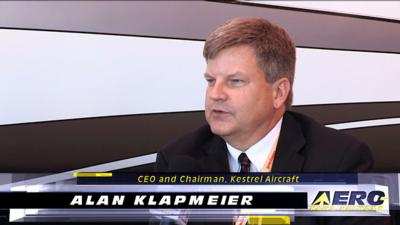
First we must understand that the FAA is NOT going to unilaterally rescind regulations and processes they have put in place. No FAA employee or Administrator will put their career or livelihood at risk even if presented with strong evidence. If they were to change policy and someone is harmed; Congress and the Press would make them an example. That is why the EAA/AOPA proposal for Third Class Medical will not happen. The FAA will study the problem till some outside force intervenes.
Even if there is strong evidence to support the request, we are not going to find a person to put their name on its approval. It is a death sentence. Right now the government has GA and LSA under attack. With the NTSB putting GA accidents on their hot list; this has made the pressure on the FAA even more intense. The FAA is more and more imposing the same processes they use for airline management on part 23 and LSA aircraft. They cannot point to any action they have taken that has significantly improved the safety and accident rates in personal aviation however. What they have done is caused the industry to stagnate over the last 60 years and the cost of new aircraft has increased at a rate far higher than inflation. The industry is selling fewer than 600 single engine aircraft worldwide a year.
The way we move forward is to use our Constitution as it was intended. The recent "Pilots Bill of Rights" legislation shows how you can rapidly make structural changes to government bureaucracy. Senator Inhofe showed how when a Pilot is at odds with Government, they are at a disadvantage. It just took him being the pilot for the legislation to be drafted. I propose we use the GA Caucus and our elected representatives to "Save GA". The primary theme of this proposal is that private light aircraft owners should not be treated any different from Recreational Vehicle Owners or Pleasure Boat Owners under the Section 1 of the Fourteenth amendment.
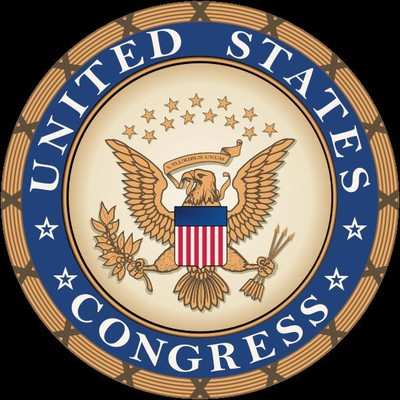
I am calling for legislative action. The General Aviation Vitalization Economic Act. The GAVE Act.
So here is my 10 step recovery program to save Personal Aviation:
1. Return the FAA mission back to its original as the Congress intended when it was the CAA. "To promote Civil Aviation and insure a safe national transportation system." When Congress removed the "Promote" side after the ValuJet accident (A knee jerk response that has happened frequently, ELTs, Flight hours for ATP, etc), they changed the required balance that the bureaucrat has to weigh when implementing policy and regulation. Step one is to restore a balance and hold them to it. I recommend their name be returned to CAA so they understand it is not business as usual.

2. Congress will, in annual legislation and when the FAA authorization act is done; place growth goals and other "promote" criteria on the FAA. An example would be like when the FAA decided to reduce GA accidents by 5% over 5 years. There should have been the requirement to grow GA by 5% also. The flying public will present their ideas to Congress. Here is a great opportunity for our letter organizations to help. Why wouldn't they want to do this? It is good for jobs and the economy and their constituents. I also propose that legislation make it clear that funding the FAA and pleasure aviation will be done through the Fuel Use tax only. Changes in funding will be made through adjustments in this rate and only after all cost cutting measures have been shown to have been implemented.
3. The government must protect the general public. So for Part 91 flying, there must be a way found to deal with accidents that injure innocent bystanders. It is interesting to note that there are more innocent bystanders killed by RV (Recreational Vehicles) and pleasure boats. It would seem that an effective government would be more concerned with protecting the citizens most affected. When you look at the NTSB accident database, there are very few accidents that injure people or property on the ground. That is a good thing. I propose that an insurance fund be established that takes care of those that have such a claim. I propose that a 1% tax on aviation fuel be established and the dollars go in to this insurance fund. A process similar to the 9/11 fund process would work for determining how much should be paid to those innocent public affected. Surely we can agree that a citizen killed by terrorist and the government payment for such an event is reasonable for citizens impacted by personal
aviation (Part 91). This should fit nicely since the government seems to think that personal aviators are potential terrorists.
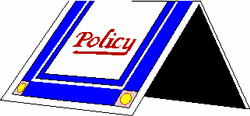
4. Now we must deal with the individuals that are flying and that the FAA feels they must protect. We have today, a defacto mandatory insurance for flying. Most banks will not loan unless there is insurance. The problem today is that private aircraft accident litigation is far higher than other forms of transportation like automobiles and boats. It has significantly increased the cost of pleasure flying. Some say that it has added 50% to the cost of everything in pleasure aviation. Because most pilots do not carry enough insurance; families feel they must seek other forms of compensation from Manufactures and others to sustain them and make the accident right. We could try different forms of tort reform, but maybe the way to go is that pilots/owners of aircraft must care for those that will be left behind if there is an accident or the passengers and families of passengers. This should be handled with insurance. We need to stop the business of suing after every pleasure plane crash. We need to
get it in balance of automobile accidents. Mid-Air collisions are thankfully rare, so we need for pilots to have enough insurance to cover those they fly with and that remain on the ground just as happens with automobile accidents. Really this is true whether you fly or not. That is the whole reason for individual insurance anyway. If we stop the suing; we can bring the pleasure aircraft back in to balance with autos and boats. I would welcome some higher threshold on manufacturer liability. There has to be some form of Buyer Beware as well. Planes are complex machines. They will fail and owner /pilots will exceed the design and environment they were made to handle just as happens with RVs, cars, and boats.
5. The next item is for the growth of GA. Most large companies prohibit the use of personal aircraft for business travel unlike what they do for personal autos. I propose legislation that prohibits suing a company because an employee has a plane accident in a personal aircraft. With the provisions above, there should be no reason for an individual or lawyer to want to sue the employer. This would make owning and using an aircraft more attractive to high salaried professionals. I would also propose that the FAA regulations and interpretations on flying for business and carrying fellow employees be changed to encourage this activity on a PPL. You don't need a Commercial Driver's License to do it in your car. Again we need to be treated the same as RVs, autos, and boats. As a matter of policy; I think that FAA regulations should more mirror those for autos and pleasure boats. If you had to spend $9K plus to get a boat license or car license what impact do you think there would be on those modes of
travel? Same for getting a medical. Spending over $150 every few years for getting a medical adds up. The current regulations have not made pleasure flying safer. Let's try something new. It is interesting that you can buy a Class A RV that weights several tons and is modeled after a commercial bus and not have to get any additional training to operate it. If the FAA were in charge of ground transportation, they would require a "Type Certificate" and operate to ATP standards.

6. The next item we must address is the FAA oversight of Part 23 aircraft and LSA. There is currently an ARC (Aviation Rulemaking Committee) that is studying the current process and has a mission to reduce the cost by 50% AND to improve safety by 50%. While we don't know what they will develop; the real question is why do we have a process that is so cumbersome that it has forced industry to not innovate their engines and planes for over 50 years, with few exceptions? With the above changes; we need the FAA to deal with the BIG issues -- not every single change on every pleasure aircraft. The whole concept of Type Certificates is arcane. If the pleasure boat or automotive world had to follow that process; we would still be driving 50s cars and Christcraft wood boats. I propose that the FAA develop a whole new process similar to what the NHSA uses for cars. We need the equivalent of "crash test for airplanes." I also would want to give the FAA the power to direct recalls of products found to be
deficient, like NHSA does, with automobiles at the company expense. Why ADs are not required to be reimbursed by the manufacturer is beyond me. Now, industry can start to innovate again. Consumers will have a choice and will be able to buy the planes that best meet their needs. Costs will come down and more and more people will want to be in pleasure aviation.
The issue whereby the FAA must protect the airplane buying public is not happening. For example, we have a requirement that all part 23 aircraft must stall at less than 61 kts. What if NHSA required all cars and light trucks to stop in the same distances? A Ferrari and a Ford F150 pickup truck would be very different today. We need to get the FAA out of the business of being aeronautical engineers and focused just on the crashworthiness of the planes. I predict if the rules for Part 23 were more in line with RVs and boats, we would see far more airbags, antilock brakes and whole plane parachutes as well as companies adding more safety items to make their products more competitive. I would anticipate that the aviation insurance companies would form an organization similar to the Insurance Institute for Highway safety and aviation buyers and owner would get critical information on product differences all without government involvement, what a concept. The marketplace would filter out the bad products.
The buying public today is more informed and with the internet far more discussion of products and company customer satisfaction is possible. I also predict that companies would come to the market to provide services of reviewing products. Even Consumer Reports might get involved as the number of sales increased, and more organizations entered the market to provide product reviews and feedback. Government certification is not the only way to hold companies accountable, and again, we should be treated the same as RVs and boats.
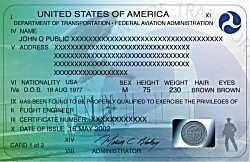
7. Now we must deal with pilot licensing. I think that the Redbird Skyport is on the right track. We have not fundamentally changed the way we train and license pilots since WWI. Some of the questions on the FAA written test date back to then. Innovation will come with the above changes. Piloting aircraft will be improved with technology like the "Red Button" by Vertical Power. New aircraft can implement the safety improvements that are known today. There is no reason that learning to fly and getting a PPL should require the time and cost that it does. We also need to go through all the FARs and fundamentally redo them so airspace management and rules of the air are far simpler. With ADS-B coming on line; this is a great time to modernize the FARs and flying. The whole concept of airspace needs a complete do-over. It is getting increasingly difficult to determine what airspace you are in. Here, automation can help as well. You should be able to easily look at your MFD or navigation device and
have it tell you the airspace you are in and if you need approval by ATC prior to entry. Many new systems do that. I also propose that the medical requirements for personal aviation be the same and no more than for pleasure boats and automobiles -- i.e., no Federal Government involvement or approval. If you have a valid and current driver's license, you are fit to fly. Again, the above changes protect the public. Under the constitution we should not be discriminated against. Here again, there are more highway deaths and boating deaths from medical conditions than pleasure flying. The FAA should be focused on creating the best National Airspace System and how they can provide an environment for 5 to 10 million personal aircraft. We need to completely redefine how personal aircraft operate in the airspace.

8. Cost of Flying is trending the wrong way. With the changes above; we will have started to bring down the cost curve. Hopefully with new innovation; we will have many more aircraft come to market with new power plants and fuels. Hopefully we can get fuel that is cost competitive with auto fuels. When we get the FAA out of the micromanagement of certification; we also need to get them out of the maintenance process as well. With no type certificates and production certificates anymore; we don't need to have the rigid maintenance processes/paperwork of today. Here; the model of auto maintenance and industry certification should work. With the public protected with the changes we made above; we don't need the FAA micro-managing the maintenance of personal aircraft like they were airliners. I would point out that the current process has not produced a higher level of safety and reduced defects compared to automobiles. As a matter of fact it is far worse. Personal aircraft engines and accessories
fail far more often than automobiles. It is clear that the FAA only knows one way to regulate and that is how they regulate the airlines, and more and more they are imposing those same standards on part 23 and LSA. This drives the cost up dramatically for certification and operations with no demonstrated improvement in safety.

9. We need to have a positive press and citizen climate to make these historic changes. The press has scared the public with their reporting of every pleasure aircraft accident. We need to address the reality that "if it bleeds, it leads." Here I would propose that the letter associations take a very proactive process to reach out to the press with fact based data so that the press can help show why these changes would be good for them. When the public starts to see that being able to own and fly a plane might be something for them -- that their husband or wife might be able to be home more often during the week instead of long airline trips to visit clients. Family vacations might be more fun. Here again a very positive and active advertising campaign by some associations could help. Show some families that have a very positive and different lifestyle through personal aviation. I find it interesting that current aircraft manufacturers do not advertise on TV or similar media, to non-flyers. We
should at least model what the RV and boating world do. Just as we have highway and boating tragedies, we will have pleasure aviation ones as well. Hopefully with newer and more innovative products those will decrease as well, just as they have in the automotive sector. We should demand that the press treat us the same as they do RV and pleasure boat accidents. Those that sensationalize should be called out through effective response, via social media and the combined voice of a renewed aviation community.
10. The last task is to hold our letter organizations and their leadership accountable for effective change. I recommend that we give AOPA, EAA, GAMA, and LAMA 2 years to get the congress and state legislatures to enact the changes in laws that would be necessary to remove the FAA from direct part 23 oversight except for crashworthiness, and state legislatures to revise their tort rules and make juries put jury awards in line with RV and boat accidents. We should then set goals for these organizations to have the annual sales of personal aircraft in 5 years be equal to RV sales and in 10 years equal to pleasure boat sales. There is no reason that aircraft purchases should not compete for family discretionary dollars, and when the cost of airplanes is in line with RVs and boats, families will make decisions to buy these products and the economies of scale will return and further cost will come done. I was disappointed with AOPA President's (Craig Fuller) 2013 Strategy letter to members. His goals
for that association are so low that anyone could achieve them. If the leaders of these organizations cannot meet the above timelines we should vote to remove them from office and find individuals with the leadership to get this industry back. With the state of this industry and our nation's economy, we should be able to get congressional and state legislature support for changes. This industry could contribute significant tax revenue with a growing business, sales and job increases. The number of companies, products, and services that will enter the market when we are regulated like the RV and boat industry will be astounding. Governments like increasing revenues and this is a sleeping giant. We are not asking for any investment by governments only to get the FAA out of over regulation.
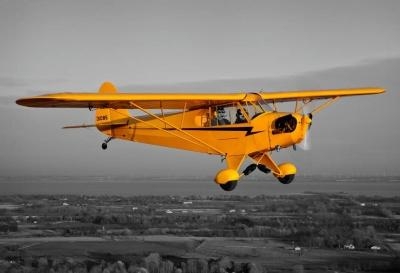
All change can have unintended consequences. These changes might have potentially adverse effects. What I do know is that we cannot continue as we are. We need a bold new plan, not more of the same. This industry has a limited amount of time to get a course change. Even if the economy were to take off and roar, the fundamentals of FAA and Personal Aviation are broken. It was known in 1994 when congress passed the GARA (GA Recovery Act). That was a small step that actually did more harm than good. We need to be bold. I do not believe for reasons stated earlier that any effective dialog with the FAA to make small incremental changes would be productive or enough to change the trend.
Americans must be free. We must be allowed to take the level of risks that we accept. It is only in personal aviation that the government has placed regulations that are impacting that freedom now through higher costs. Think how snow skiing, pleasure boating, motorcycle, automobile driving or other forms of personal hobbies would be impacted if you had a Federal Government Administration who's only job was to "Protect the Public". They did what they were told. Now it is time to tell them to do something new through our elected representatives. Congress has many big problems to address. We saw that with the Pilots Bill of Rights, that they can vote when presented with a good sound complete legislative package. I propose we give them the best that is possible and make their job very easy. All they have to do is vote on it.
In closing, transformations are never easy. I want you to envision a country where we have a vibrant general aviation industry that is competitive with recreational vehicles and pleasure crafts. Just think how local government would be changed when more and more citizens would demand airports, services, and products near them rather than wanting their government to close airports. With more and more pleasure aircraft, more companies will bring products and services for their use, just like with RVs and boats. Our sector will contribute more and more tax revenue and all will benefit.
Win/Win/Win.
 ANN's Daily Aero-Linx (04.15.24)
ANN's Daily Aero-Linx (04.15.24) Classic Aero-TV: 'No Other Options' -- The Israeli Air Force's Danny Shapira
Classic Aero-TV: 'No Other Options' -- The Israeli Air Force's Danny Shapira Aero-News: Quote of the Day (04.15.24)
Aero-News: Quote of the Day (04.15.24) Airborne 04.16.24: RV Update, Affordable Flying Expo, Diamond Lil
Airborne 04.16.24: RV Update, Affordable Flying Expo, Diamond Lil ANN's Daily Aero-Term (04.16.24): Chart Supplement US
ANN's Daily Aero-Term (04.16.24): Chart Supplement US












